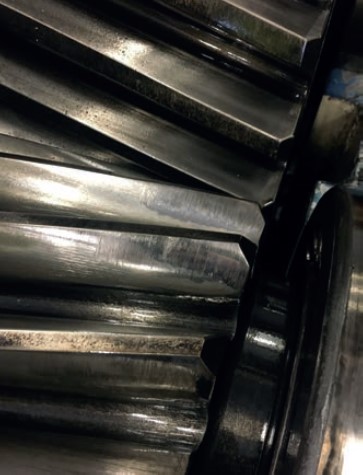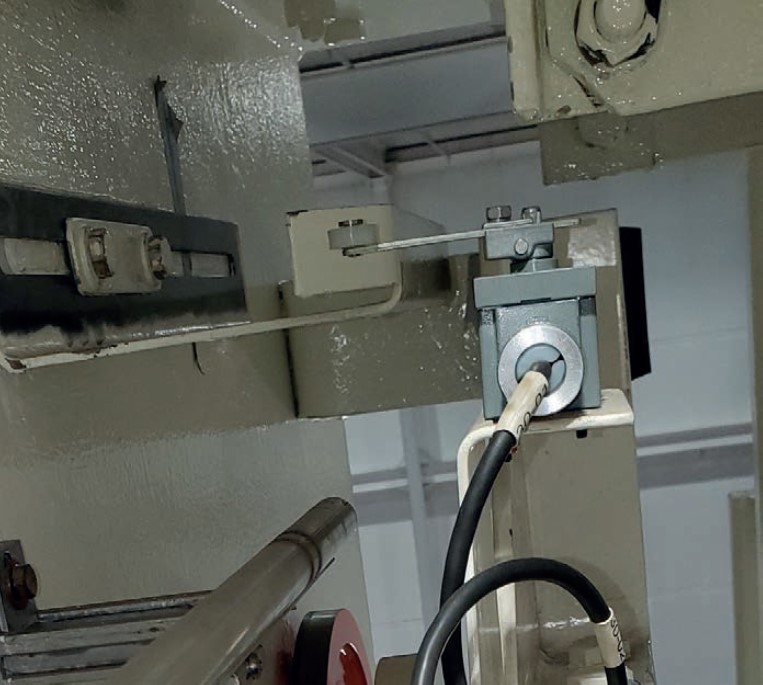Overhead crane knowledge – Richard Phillips, mechanical engineer, CP&A
29 November 2023Working for a company that offers a wide variety of services, including procurement, specification, design, manufacturing review, modification and accident investigation, I hear a lot about machinery alignment. But it isn’t always widely understood in the crane industry.
Machinery alignment can refer to any mechanical component that is part of a system that involves motion. In very broad terms, alignment means that shaft centre lines are collinear or parallel; rails are straight, and wheels are all pointed in the same direction. As it pertains to overhead cranes and hoists, the two major areas for consideration are rotating machinery alignment and wheel/rail alignment on the bridge/trolley travel systems. The consequences of misalignment can be disastrous. The worst-case scenario is a gearbox failure on a hoist when the crane is not equipped with an emergency brake on the drum. In the event of a gear failure, the motor brake cannot transmit torque to the drum. This is essentially a single point of failure system, and the load will be dropped. The Crane Manufacturers Association of America (CMAA), a product group within Material Handling Industry (MHI), publishes alignment tolerances for crane rails. Most other design codes are clear on these requirements too, including the European Materials Handling Federation (FEM), which provides comprehensive guidance on alignment of various components, such as gearboxes and couplings. As CMAA, FEM, and other authorities would agree, machinery alignment is important in all cranes that are regularly used. Some alignment requirements are based on crane dimensions – the longer the span, the larger the alignment tolerance becomes, or a larger misalignment is allowed – but, as a rule of thumb, the faster a crane component operates, the more important alignment is. A shaft that spins quickly is going to have more strict alignment requirements than a hoist drum that spins as comparatively slow as 30rpm. Speed is relevant to alignment between the motor and gearbox especially. Typically, motors operate at high speeds, such as 1,750rpm or 1,150rpm. A gearbox is used to decrease the speed and increase the torque. Couplings are used to help compensate for both parallel and angular misalignment. Proper alignment will help reduce vibration and fatigue loads on power transmission equipment leading to a longer operating lifespan. The motor and gearbox must maintain acceptable alignment under load. Of course, as with any root cause machinery issues, we can see the evidence of misalignment in damage and wear to crane components, such as the aforementioned rails, wheels, motors and gearboxes, gear mesh, and even limit switches and triggers (a way of preventing motion from travelling beyond the operational zone). I have even seen crane wheels needing to be replaced every two years because they are wearing out due to misalignment. Notably, misalignment issues are rarely caused by installation. While the sources can greatly vary, most of the time they are from misuse. After all, crane manufacturers have a lot of incentives to get it right; if they don’t, they usually have to do some warranty work. Gear manufacturers also do a good job of making sure the gears are properly aligned in a gear mesh. When gears fail, another issue is usually present, such as the foundation not being stiff enough to keep the machinery in alignment while under load. We have seen couplings get pushed outside of their operating range, which causes the gear mesh to start misaligning. When the gear mesh is misaligned, the gear teeth are not able to spread the transmitted force along the full length of the tooth. This concentrates the transmitted force into certain areas and leads to pitting and cracking. There are ways to detect misalignment before it results in catastrophe. Typically, the crane manufacturer will provide an operations and maintenance manual; if the preventive maintenance programme is followed, these issues can be identified and fixed without any incidents. There is a large amount of metrology equipment that can be used to make very precise measurements. Coupling manufacturers also give good measurement instructions in their product literature. Therefore, most wheel and/or rail issues are (can be) discovered by preventive maintenance and routine inspections. Metal shavings are present in certain areas where wheel flanges are rubbing against the rail. Depending on the application, it can be quite loud when the cranes are in use. Sometimes during preventive maintenance, the crane can be moved when the environment is quiet and then noise is more likely to be heard. These issues can cause grinding against a rail and lead to wearing. If a rail system is supposed to be 100ft span, but there is a section where it bumps out a couple of inches, the outer wheel flanges will contact the rail and want to pull the rail in. Some preventive maintenance items can slip under the radar, however, such as oil samples from the gearbox. If metal shavings are consistently present in the oil analysis, this can be a clue that maybe the gears are experiencing accelerated wear. So, even something as simple as an oil analysis can provide a lot of insight into what is happening with a gearbox.
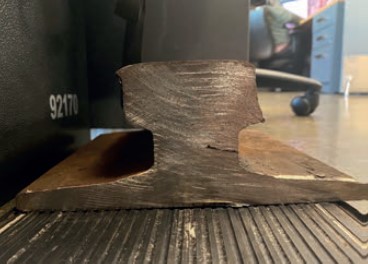 This was caused by poor rail alignment. The rail gauge increased too much at a certain point and the trolley wheels pinched the rail (wanted to pull the rail in).
This was caused by poor rail alignment. The rail gauge increased too much at a certain point and the trolley wheels pinched the rail (wanted to pull the rail in).
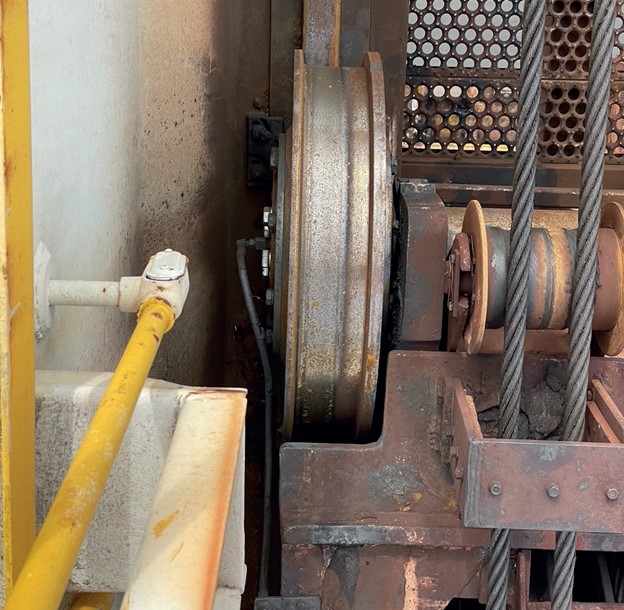 The trolley wheel flange started grinding against a rail and wearing. This can be a symptom of wheel misalignment and/or rail misalignment.
The trolley wheel flange started grinding against a rail and wearing. This can be a symptom of wheel misalignment and/or rail misalignment.
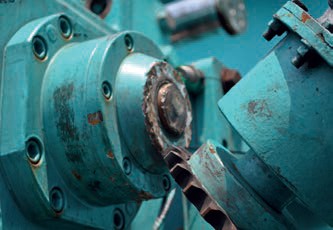 A gearbox input shaft failed because the alignment between the motor and gearbox couldn’t be maintained under load. Although this was a torque arm arrangement, this had a similar effect as a ‘soft foot’, which can be likened to sitting on a chair, and it rocks back and forth because the feet aren’t even. This can cause misalignment and vibration, which is a major cause of fatigue and early wear problems for powertrain equipment.
A gearbox input shaft failed because the alignment between the motor and gearbox couldn’t be maintained under load. Although this was a torque arm arrangement, this had a similar effect as a ‘soft foot’, which can be likened to sitting on a chair, and it rocks back and forth because the feet aren’t even. This can cause misalignment and vibration, which is a major cause of fatigue and early wear problems for powertrain equipment.

